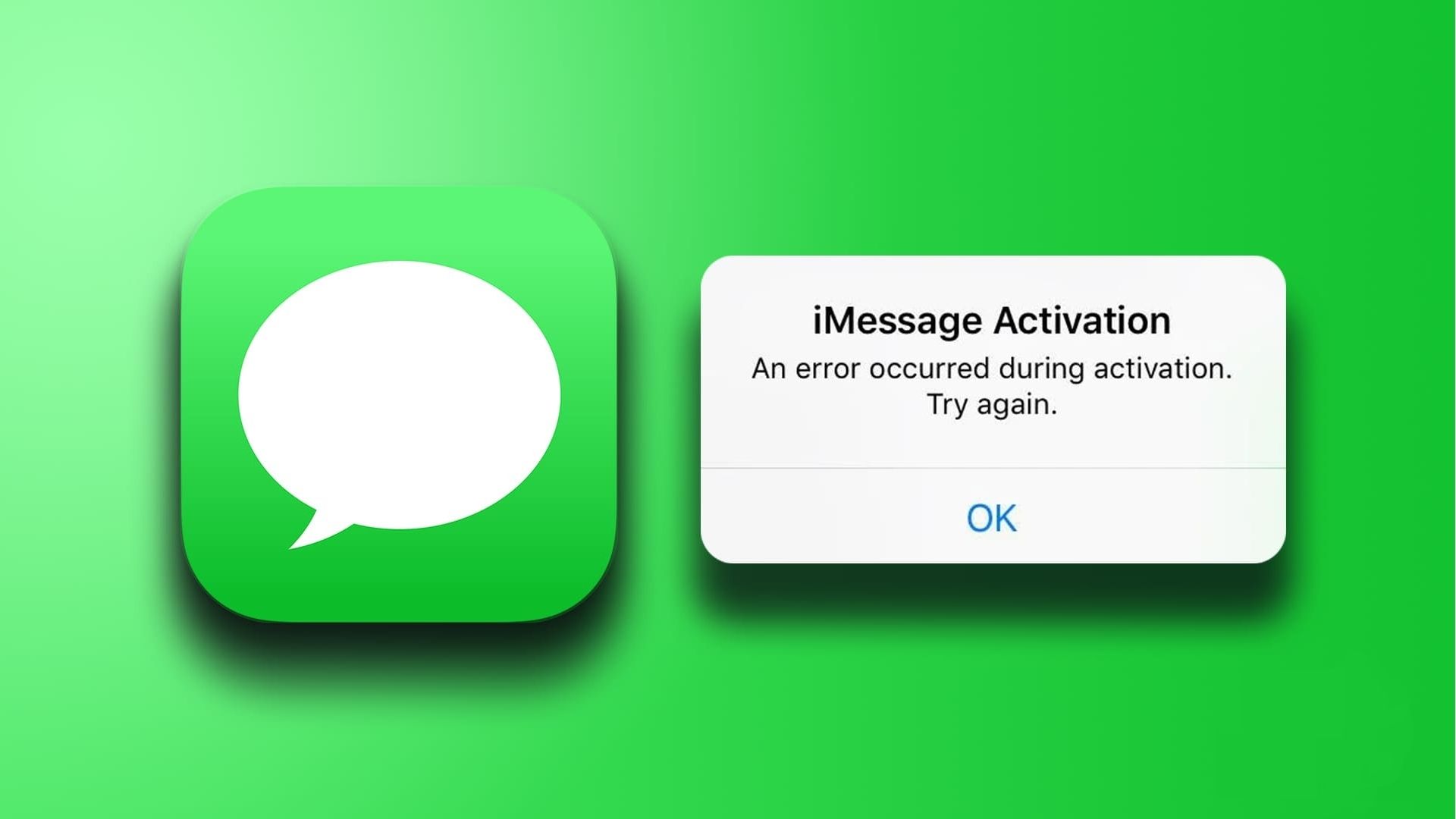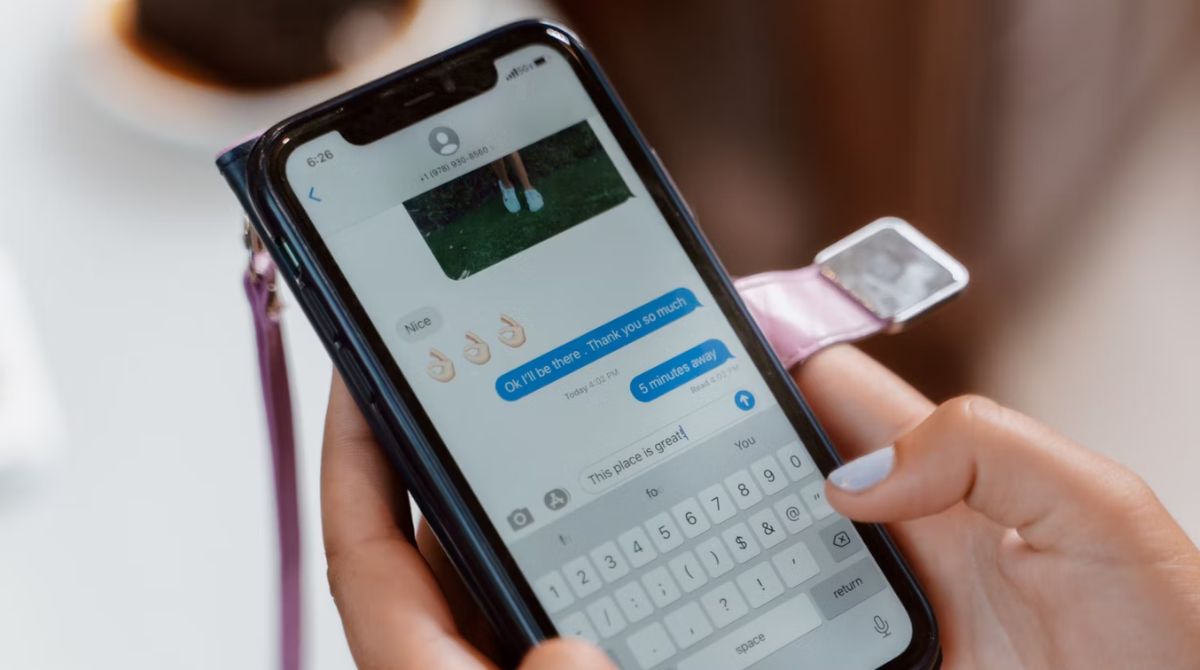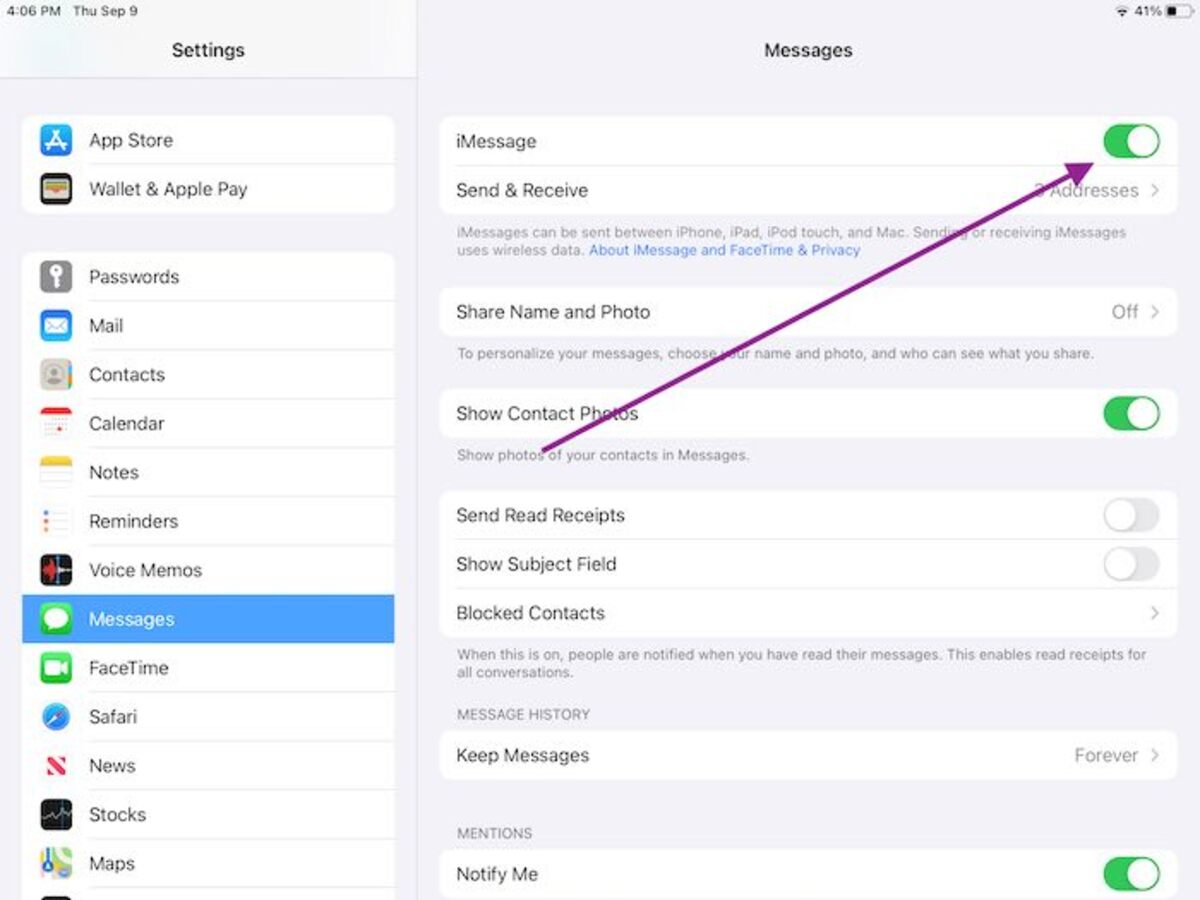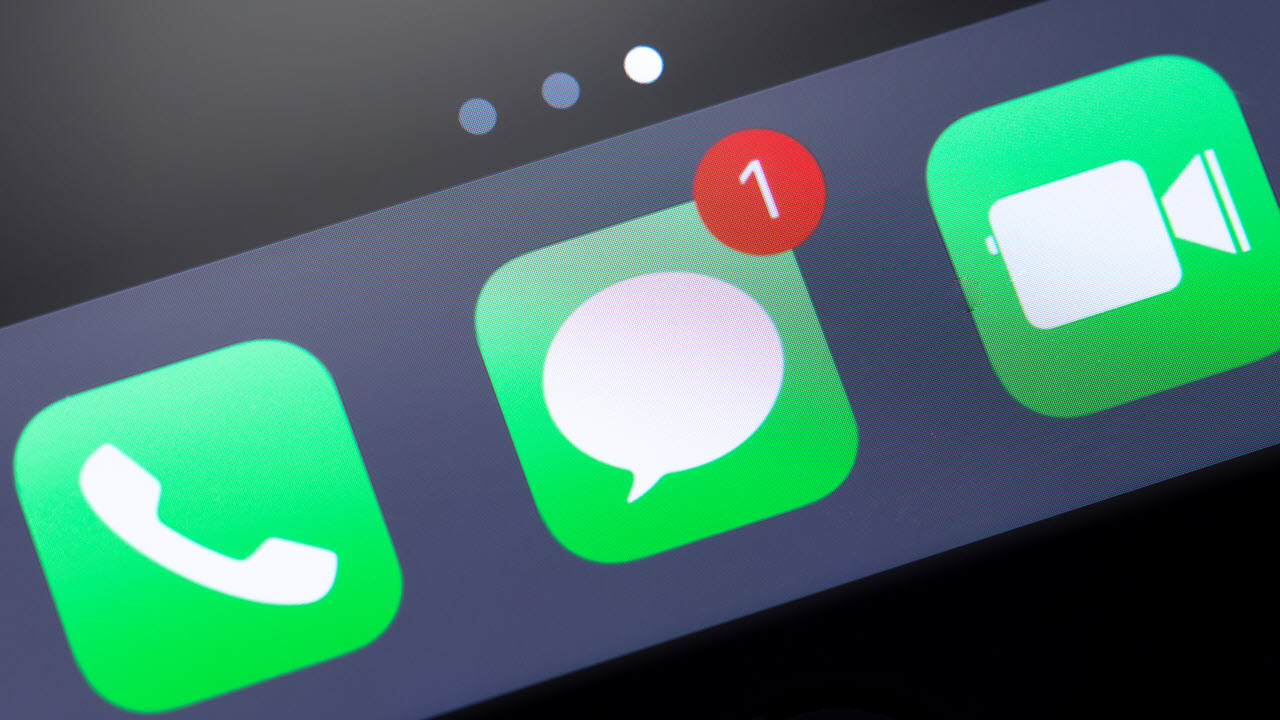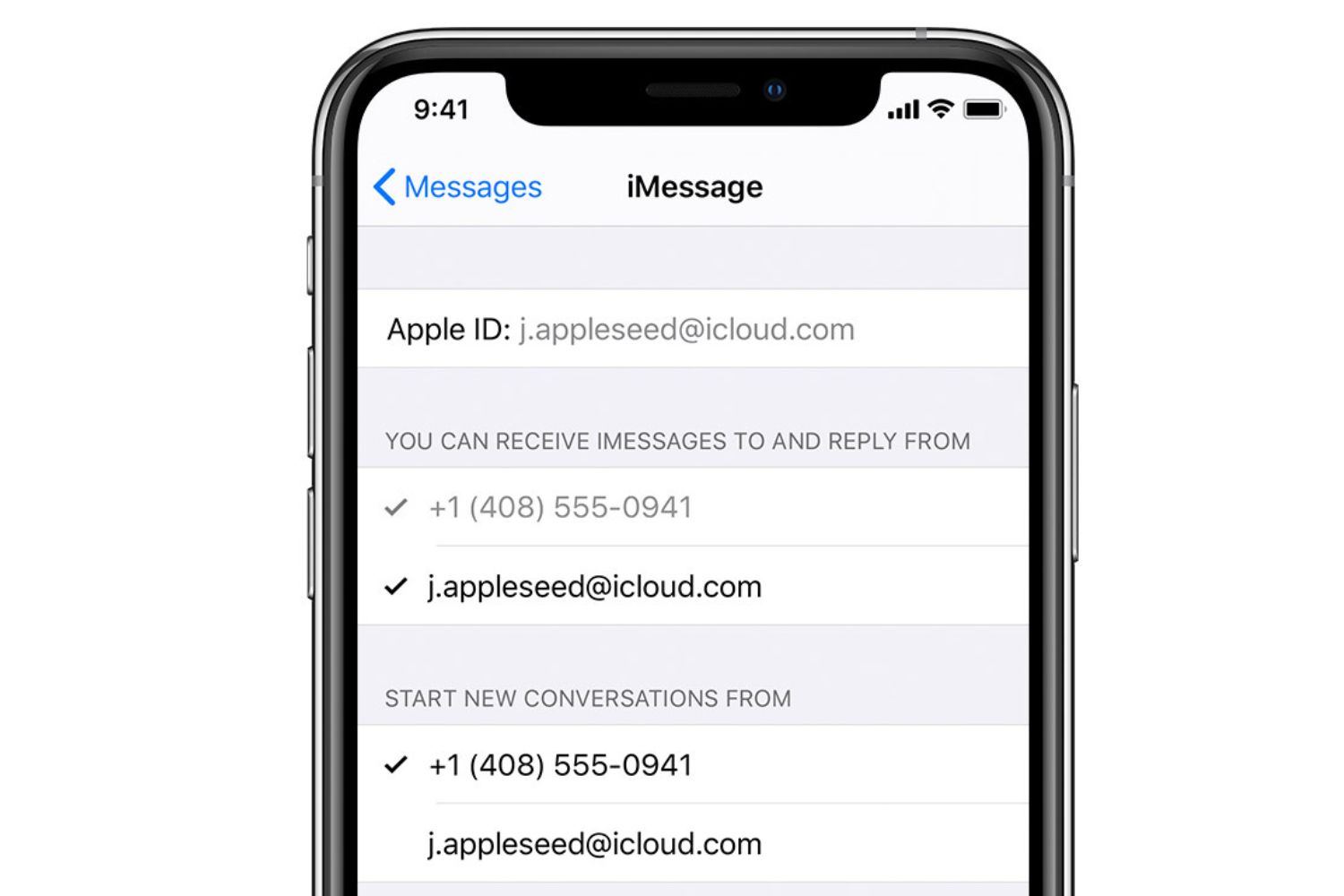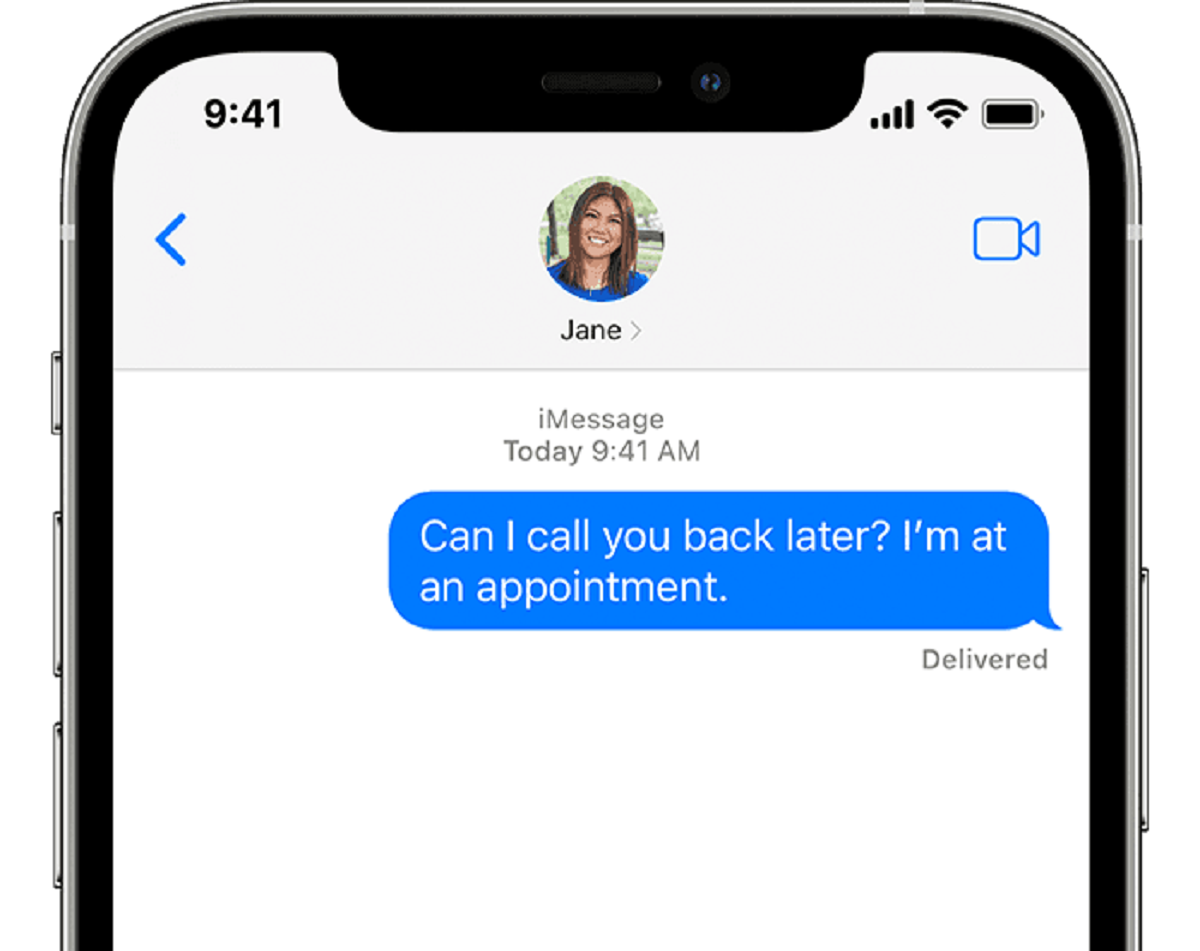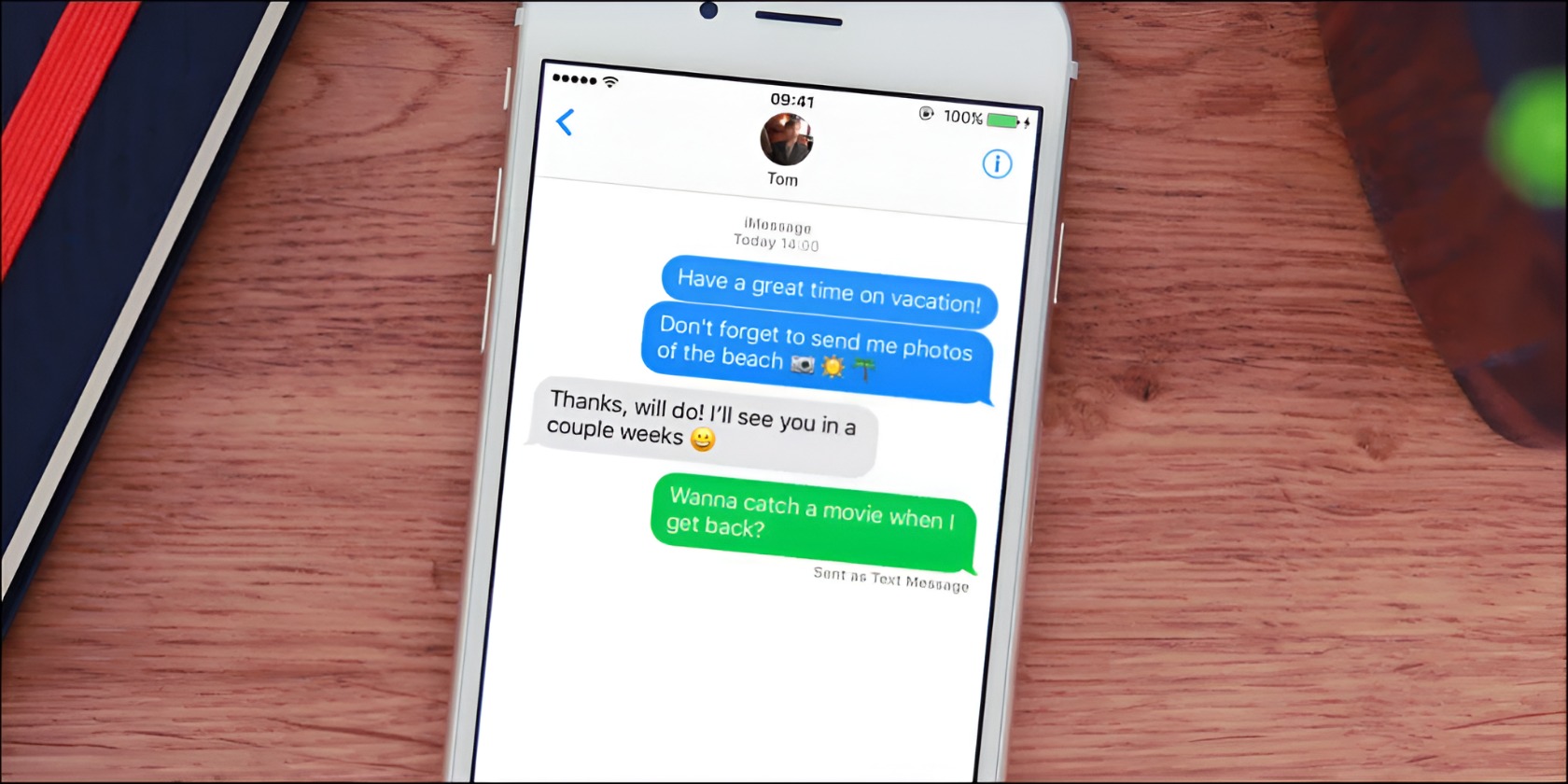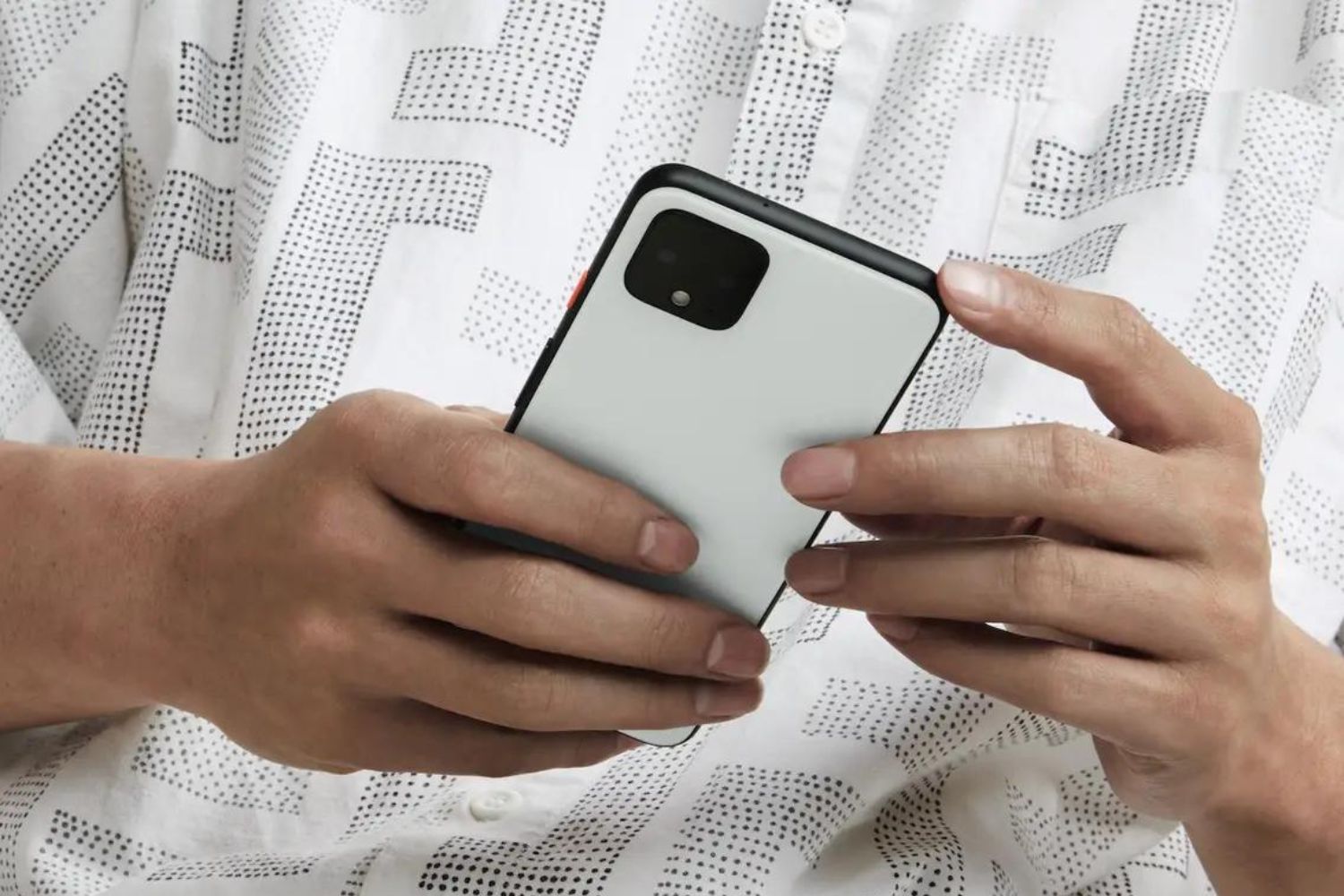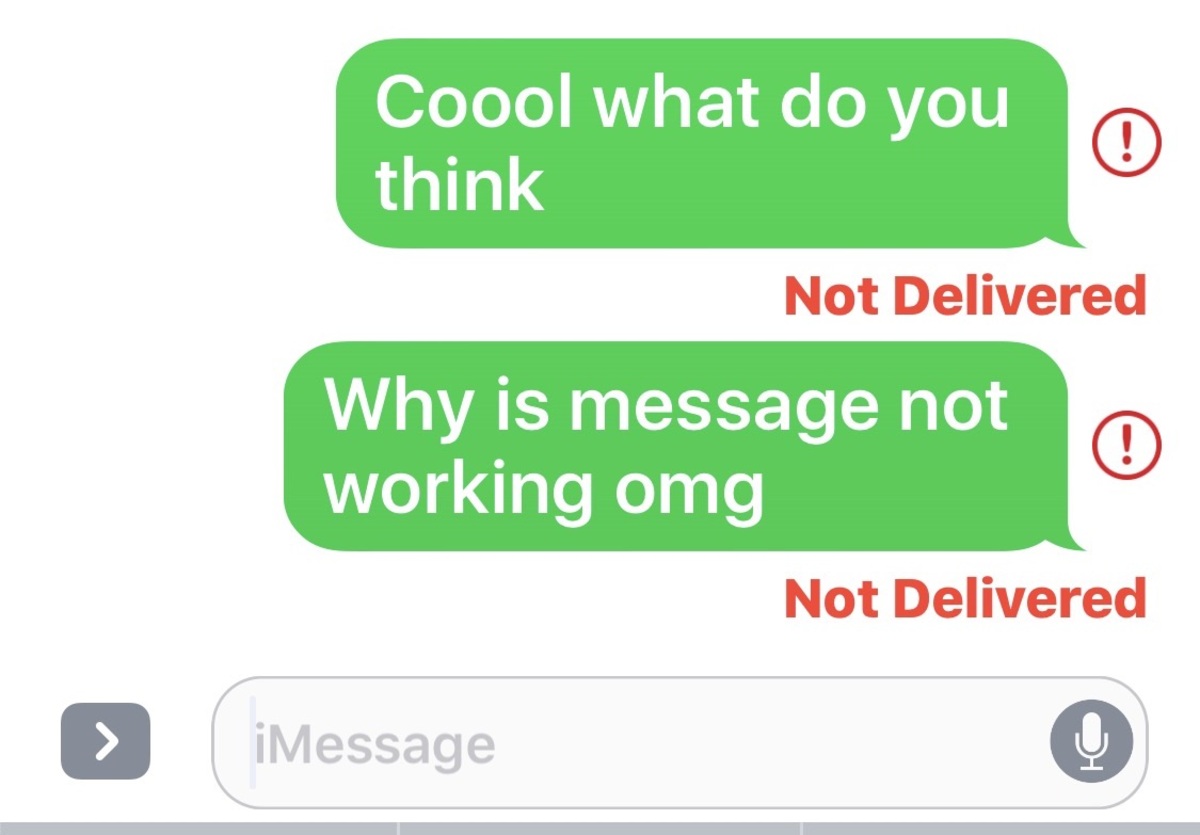Introduction
Activating iMessage on your iPhone can sometimes be a straightforward process, but there are instances where you may encounter difficulties. So, what could be causing your iMessage not to activate? Understanding the common reasons behind iMessage activation issues can help you troubleshoot and resolve the problem effectively.
iMessage is an instant messaging service developed by Apple, allowing users to send text messages, photos, videos, and more to other Apple device users over Wi-Fi or cellular data. It provides a convenient and seamless way to stay connected with friends, family, and colleagues.
However, despite its convenience, iMessage activation can sometimes present challenges. This can be frustrating, especially when you want to take advantage of the features and benefits that iMessage offers. But don’t worry, as there are several solutions you can try to get your iMessage up and running.
In this article, we will explore the common reasons why iMessage may not be activating on your iPhone and provide solutions to help you resolve the issue. Whether you are experiencing a “waiting for activation” message, an error message, or no response at all, the troubleshooting steps outlined here will help you get your iMessage functioning properly.
Before we delve into the solutions, let’s take a look at some of the most common reasons why iMessage activation issues may occur. By understanding these reasons, you can narrow down the specific cause and apply the appropriate solution.
Common Reasons for iMessage Activation Issues
There can be several underlying reasons why iMessage is not activating on your iPhone. Understanding these common issues will help you troubleshoot the problem effectively. Here are some of the most frequent causes:
- Incorrect Apple ID and iCloud settings: To activate iMessage, your Apple ID and iCloud information must be correctly set up on your device. Ensure that you are using the correct Apple ID and that you are signed in to iCloud properly.
- Issue with date and time settings: iMessage activation can fail if your iPhone’s date and time settings are incorrect. Make sure that your device is set to automatically update the date and time or manually set them correctly.
- Lack of internet connectivity: iMessage requires a stable internet connection to activate. If you are not connected to Wi-Fi or have a weak cellular signal, iMessage activation may fail. Verify that you have a reliable internet connection before attempting to activate iMessage.
- Carrier limitations: Some carriers may have specific restrictions or limitations on iMessage activation. Contact your carrier to ensure that iMessage is supported and enabled on your cellular plan.
- Outdated software: If your iPhone’s software is outdated, it can cause compatibility issues with iMessage activation. Ensure that your device is running the latest iOS version available and update it if necessary.
- Network settings issues: In some cases, network settings conflicts can hinder iMessage activation. Resetting your network settings can help resolve any network-related problems and provide a fresh start for iMessage activation.
These common reasons can often be the root cause of iMessage activation issues. By identifying the specific cause, you can proceed with the appropriate troubleshooting steps to address the problem. In the following sections, we will discuss each solution in more detail to help you activate iMessage successfully. Let’s dive in!
Check Apple ID and iCloud Settings
One of the first things to check when your iMessage is not activating is your Apple ID and iCloud settings. iMessage relies on your Apple ID to function correctly, so ensuring that it is set up correctly is crucial. Here are some steps to verify your Apple ID and iCloud settings:
- Open the Settings app on your iPhone and tap on your name at the top of the screen to access your Apple ID settings.
- Ensure that you are signed in with the correct Apple ID. If not, tap Sign Out and then sign in with the correct Apple ID.
- Navigate to iCloud settings and make sure that iMessage is enabled. Toggle the switch next to iMessage to turn it on if it is currently off.
- Alternatively, you can sign out of your Apple ID and sign back in to refresh the connection. To do this, go to Settings, tap on your name, scroll down to Sign Out, and follow the prompts. Once signed out, sign back in with your Apple ID.
Verifying your Apple ID and iCloud settings is an essential step in troubleshooting iMessage activation issues. Incorrect settings or signing in with the wrong Apple ID can prevent iMessage from activating successfully.
If you have multiple Apple devices, make sure that your Apple ID is consistent across all devices. This ensures that iMessage syncs properly and allows for smooth activation on your iPhone.
Once you have confirmed that your Apple ID and iCloud settings are correct, proceed to the next troubleshooting step to address any potential issues with date and time settings.
Verify Date and Time Settings
Incorrect date and time settings on your iPhone can cause iMessage activation issues. iMessage relies on accurate date and time information to function properly. If your device’s date and time settings are incorrect, it can lead to problems with iMessage activation. Here’s how you can verify and adjust your date and time settings:
- Open the Settings app on your iPhone and go to General.
- Tap on Date & Time to access the date and time settings.
- Ensure that the “Set Automatically” option is enabled. This allows your iPhone to retrieve the correct date and time from the network provider. If it is already enabled, try toggling it off and on again to refresh the settings.
- If the “Set Automatically” option is disabled, you can manually set the date and time by toggling it off and selecting the appropriate time zone, date, and time.
Once you’ve verified and adjusted the date and time settings, try activating iMessage again to see if the issue is resolved.
It’s also crucial to note that if your iPhone’s date and time settings are significantly out of sync, it can lead to issues with secure connections, including iMessage activation. By ensuring that your device’s date and time are accurate, you can eliminate this potential obstacle and enhance the chances of successful iMessage activation.
If adjusting the date and time settings doesn’t resolve the issue, it’s time to move on to the next troubleshooting step and check your internet connectivity.
Ensure Internet Connectivity
Having a stable and reliable internet connection is essential for iMessage activation. Without internet connectivity, iMessage cannot communicate with Apple servers to activate successfully. If you’re experiencing iMessage activation issues, here’s what you can do to ensure your internet connectivity:
- Check your Wi-Fi connection: Make sure that you are connected to a stable Wi-Fi network. Open the Settings app on your iPhone and go to Wi-Fi. If Wi-Fi is turned off or if you’re connected to a weak or unstable network, try connecting to a different Wi-Fi network or toggle Wi-Fi off and on again.
- Test cellular data: If you’re unable to connect to Wi-Fi, ensure that your cellular data connection is working correctly. Check if other apps are able to access the internet using cellular data. If not, contact your cellular provider to ensure that your data plan is active and functioning properly.
- Restart your router: If you’re experiencing Wi-Fi connectivity issues, try restarting your router. Unplug the power source, wait for a few moments, and then plug it back in. This can often resolve minor connectivity problems.
- Move closer to the Wi-Fi router: If you’re experiencing a weak Wi-Fi signal, try moving closer to the router to improve the signal strength. Walls and obstacles can interfere with Wi-Fi signals, so being in close proximity to the router can help establish a stronger connection.
- Reset network settings: If all else fails, you can try resetting your network settings. Note that this will delete your saved Wi-Fi network passwords, so make sure you have them handy. To reset network settings, go to Settings, tap General, then reset, and select Reset Network Settings. This will restore network settings to their default configuration.
By ensuring that you have a stable and reliable internet connection, you eliminate a potential hurdle in activating iMessage. Once you have verified your internet connectivity, proceed to the next troubleshooting step and try activating iMessage with your carrier.
Activate iMessage with Carrier
If you have confirmed that your Apple ID, iCloud settings, date and time, and internet connectivity are all functioning correctly, but iMessage is still not activating, you may need to reach out to your carrier for assistance. Some carriers require additional steps to enable iMessage on your cellular plan. Here’s what you can do:
- Contact your carrier: Reach out to your cellular provider’s customer support or visit their website to inquire about activating iMessage on your account. They may have specific requirements or settings that need to be enabled for iMessage to work properly.
- Provide necessary information: Your carrier may ask for specific details, such as your phone number, account information, or device identification, to activate iMessage on your plan.
- Follow their instructions: Once you have contacted your carrier, they will provide you with the necessary steps to activate iMessage. This may involve making changes to your account settings or provisioning iMessage on their end.
- Allow time for activation: After following your carrier’s instructions, give it some time for the changes to take effect. It may take a few minutes or even a few hours for iMessage to activate fully.
Your carrier plays a crucial role in ensuring that iMessage works seamlessly on your cellular plan. By contacting them and following their instructions, you can resolve any carrier-related issues and activate iMessage successfully.
If activating iMessage with your carrier does not resolve the problem, there may be other underlying issues with your iPhone’s software or network settings. Let’s explore the next troubleshooting steps, which involve restarting and updating your iPhone.
Restart and Update iPhone
If you’ve encountered iMessage activation issues despite trying the previous troubleshooting steps, restarting and updating your iPhone can often resolve any software-related problems that may be causing the issue. Here’s what you can do:
- Restart your iPhone: Sometimes, a simple restart can resolve temporary glitches and refresh your device’s settings. Press and hold the power button until the slide to power off option appears. Slide it to power off, wait a few seconds, then press and hold the power button again to turn your iPhone back on.
- Check for iOS updates: Outdated software can cause compatibility issues and hinder the activation process. Make sure your iPhone is running the latest version of iOS. Go to Settings, tap General, and select Software Update. If an update is available, follow the prompts to download and install it.
- Allow time for updates: After updating your iPhone, it may take some time for changes to take effect. Restart your device again and wait for a few minutes to ensure that the updates are fully applied.
By restarting your iPhone and ensuring that it is running the latest software, you can eliminate any potential software-related issues that could be interfering with iMessage activation.
If the problem persists even after restarting and updating your iPhone, you may need to consider resetting your network settings. This can help resolve any network-related conflicts that may be preventing iMessage from activating properly.
Reset Network Settings
If you are still facing issues with iMessage activation on your iPhone, resetting your network settings can help resolve any network-related conflicts that may be preventing iMessage from activating properly. Here’s how to reset your network settings:
- Open the Settings app on your iPhone and go to General.
- Scroll down and tap on Reset.
- Select “Reset Network Settings.”
- You may be prompted to enter your passcode or verify your decision. Confirm the reset by tapping on “Reset Network Settings” again.
By resetting your network settings, you will erase all saved Wi-Fi networks, Bluetooth connections, and VPN settings. However, it can often resolve issues related to network connectivity and refresh network configurations.
After resetting your network settings, reconnect to your Wi-Fi network and try activating iMessage again. This process can help eliminate any network conflicts that may have been hindering iMessage activation.
If the issue persists even after resetting your network settings, it is recommended to reach out to Apple Support for further assistance. They can provide specialized guidance and troubleshooting steps to help resolve the iMessage activation issue on your iPhone.
Now that we have explored various troubleshooting steps, you should have a better understanding of how to address iMessage activation issues. By following these steps, you can increase the chances of successfully activating iMessage and enjoying its benefits on your iPhone.
Contact Apple Support
If you have tried all the previous troubleshooting steps and are still unable to activate iMessage on your iPhone, it’s time to reach out to Apple Support for further assistance. Their team of experts can provide personalized guidance and help you resolve the issue. Here’s how you can get in touch with Apple Support:
- Visit the Apple Support website: Go to the Apple Support website (support.apple.com) on your iPhone or another device.
- Select your region and choose the “Contact Support” option.
- Specify the issue: Follow the prompts to select the category and subcategory that best describes your iMessage activation problem. Provide a brief description of the issue you are experiencing.
- Choose support options: Apple offers various support options, such as live chat, phone call, or scheduling an appointment at an Apple Store. Select the option that is most convenient for you.
- Follow the instructions: Depending on your chosen support option, Apple will provide you with further instructions on how to proceed. Follow their guidance to connect with an Apple support representative.
When contacting Apple Support, be prepared to provide details about your iPhone model, iOS version, and any steps you have already taken to troubleshoot the iMessage activation issue. This information will help the support team assist you more effectively.
Apple Support has a wealth of knowledge and resources to help you resolve iMessage activation issues. They can guide you through more advanced troubleshooting steps tailored to your specific situation.
If necessary, Apple Support may also recommend scheduling an appointment at an Apple Store, where a technician can examine your iPhone in person and provide further assistance.
Remember, Apple Support is there to assist you, so don’t hesitate to reach out if you need additional help in activating iMessage on your iPhone.







